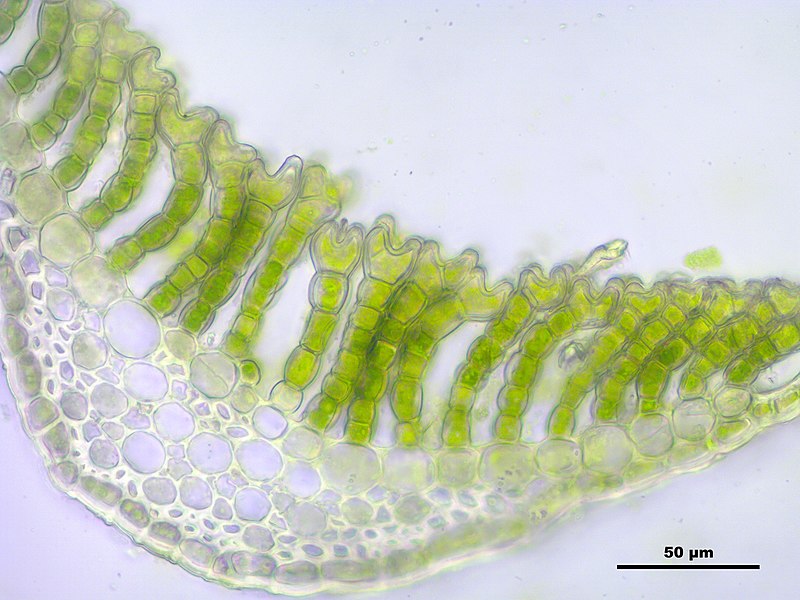by Piter Kehoma Boll
For those who never paid much attention to the mini-world of mosses, these may all look the same. However, as we have already learned with the moss species that have been previously presented here, there is a great diversity among these small non-vascular plants. But what if I told you that not all mosses lack water-conducting tissues, or at least not quite?
To understand this, let’s introduce today’s species, Polytrichum commune, also known as the common haircap moss, among other names. It is found across the whole world in areas with high humidity and rainfall, especially bogs, wet heathlands and along forest streams.

Several things make the common haircap moss a very peculiar moss. While most moss species are only some millimeters tall, sometimes a few centimeters, the common haircap moss can grow to an exceptional height of 70 cm, although it often does not go beyond 10 cm. Young plants are dark green, but the color slightly changes to brown as they age. The leaves are often 6 to 8 mm long but can reach 12 cm. They are narrow and elongate. When dry, they point upward, becoming closer to the stem, but when they get wet they point outward, often curving slightly downward.
The reproduction of the common haircap moss basically follows the same pattern as in other mosses. The dominant phase is the gametophyte, which can produce either male or female gametes. The male gametes travel through the water until they reach the female plants and fuse with the female gametes to produce a zygote, which will grow into the sporophyte that has the typical aspect of a long stem with a spore capsule at the top. Then the sporophyte releases the spores, they germinate to produce new gametophytes.

While most moss species have a single layer of photosynthetic cells on the surface of their leaves, the common haircap moss has them organized into lamellae, ridges that run along the leaves’ length and are one cell thick and several cells tall. The uppermost cells of the lamellae are slightly wider than the others, which makes very narrow gaps to form below them between adjacent lamellae. This microenvironment can retain water in dry conditions, which makes the common haircap moss relatively resistant to desiccation when compared to the average moss.

But the complexity of this species does not stop there. While a typical moss has no differentiated tissues in its stem and water has to be conducted from cell to cell via osmosis, the stem of the common haircap moss has a central portion formed by enlarged cells adapted to transport water upward, similar to how the xylem of vascular plants work. Around this tissue, another layer of specialized cells seems to be able to work as the phloem, conducting water in the other direction.

Since mosses are not the ancestors of vascular plants, these structures must have evolved independently in both groups. This suggests that vascularization could evolve again and again to help photosynthetic sessile organisms conquer the land. Perhaps if we humans stop to fuck this planet up, one day a new lineage of vascular plants may evolve from the lovely haircap mosses.
– – –
More mosses:
Friday Fellow: Silvergreen Moss (on 4 November 2016)
Friday Fellow: Spreading Earthmoss (on 12 May 2017)
Friday Fellow: Pellucid Four-Tooth Moss (on 13 April 2018)
Friday Fellow: Red Bogmoss (on 10 July 2020)
Friday Fellow: Impossible Moss (on 6 November 2020)
– – –
References:
Brodribb, T. J., Carriquí, M., Delzon, S., McAdam, S. A. M., & Holbrook, N. M. (2020). Advanced vascular function discovered in a widespread moss. Nature Plants, 6(3), 273-279. https://doi.org/10.1038/s41477-020-0602-x
Wikipedia. Polytrichum commune. Available at < https://en.wikipedia.org/wiki/Polytrichum_commune >. Access on 11 November 2021.
– – –
* This work is licensed under a Creative Commons Attribution-NonCommercial 4.0 International License.
This work is licensed under a Creative Commons Attribution-NonCommercial 4.0 International License.
